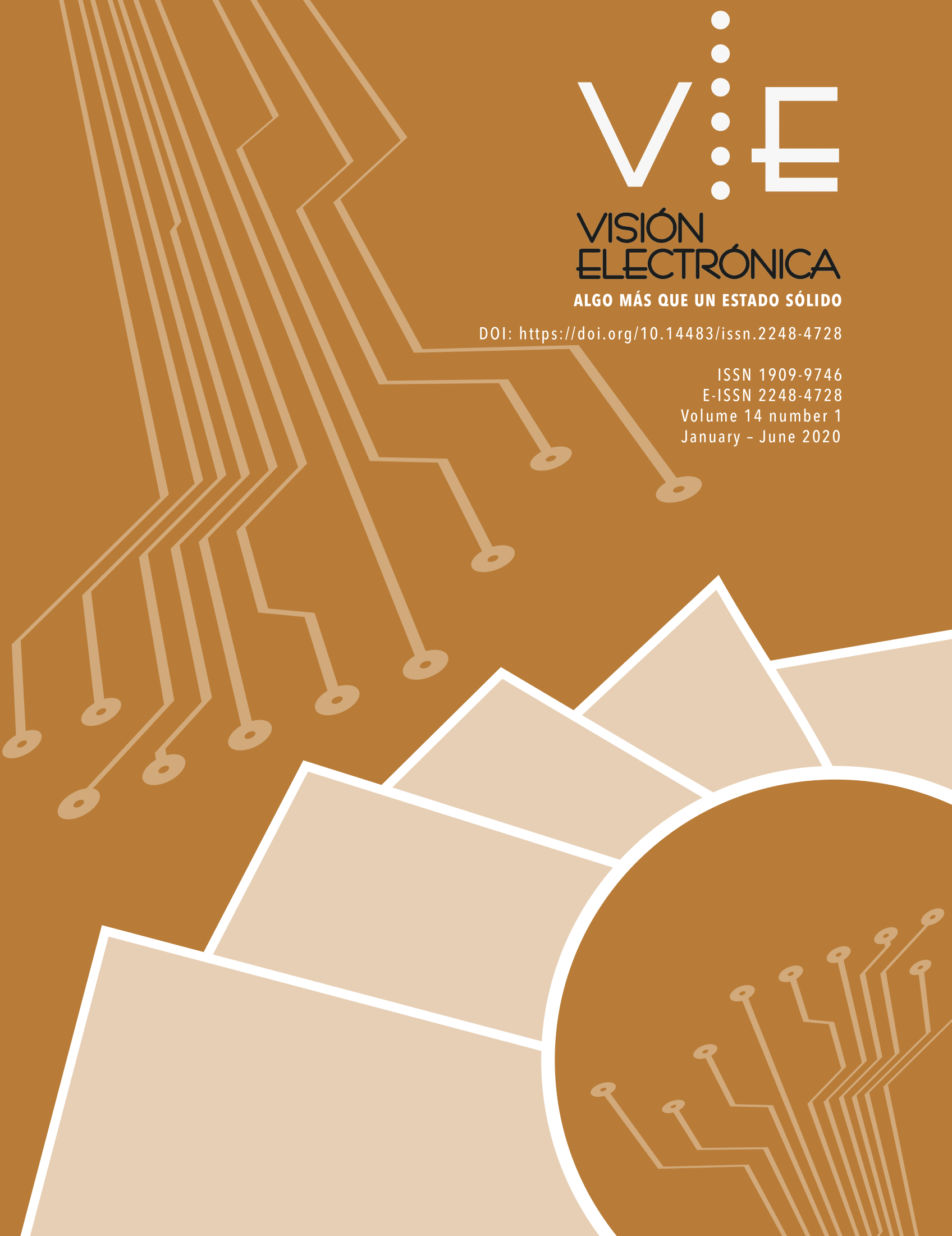DOI:
https://doi.org/10.14483/22484728.15905Publicado:
2020-01-31Número:
Vol. 14 Núm. 1 (2020)Sección:
Visión InvestigadoraMechanical model of extrinsic muscles of the eyeball
Modelo mecánico de los músculos extrínsecos del globo ocular
Palabras clave:
Músculos extraoculares, Rotación ocular, Modelo matemático, Sistema oculomotor (es).Palabras clave:
Extraocular muscles, Eye rotation, Mathematical model, Oculomotor system (en).Descargas
Resumen (en)
The mathematical modeling of the physiological behavior of extraocular muscles in ocular rotation, contributes to the learning of the oculomotor system and the development of technologies for the control of devices, through the precise prediction of the ocular displacement path. We propose in this article a mechanical model of eye movement, which incorporates the physiological properties of extraocular muscles in the force-elongation relationship and the action of agonist and antagonist muscles. An easy to understand model is presented that allows the analysis of forces applied in muscle contraction, the variation of extraocular muscle length, which generates rotation of the eye and the vector interpretation of the direction in the space towards which the eye directs the view, in movements of adduction, abduction, elevation and depression. The proposed model allows a simplification of the mathematical description, compared with other models, in relation to the action of the mechanical elements (springs and dampers) that represent the anatomical and physiological components of the contractile mechanics of the extraocular muscles. The implementation of the proposed model could serve in the future in the development of technologies that emulate horizontal or vertical eye movements for the control of devices.
Resumen (es)
El modelamiento matemático del comportamiento fisiológico de los músculos extraoculares en la rotación ocular, contribuye en el aprendizaje del sistema oculomotor y en el desarrollo de tecnologías para el control de dispositivos, a través de la predicción precisa de la trayectoria de desplazamiento ocular. Nosotros proponemos en el presente artículo un modelo mecánico del movimiento ocular, que incorpora las propiedades fisiológicas de los músculos extraoculares en la relación de fuerza-elongación y la acción de los músculos agonistas y antagonistas. Se presenta un modelo de fácil comprensión que permite el análisis de fuerzas aplicadas en la contracción muscular, la variación de longitud del musculo extraocular, que genera rotación del ojo y la interpretación vectorial de la dirección en el espacio hacia donde el ojo dirige la vista en movimientos de aducción, abducción, elevación y depresión. El modelo propuesto permite una simplificación de la descripción matemática, frente a otros modelos, de la acción de los elementos mecánicos (resortes y amortiguadores) que representan los componentes anatómicos y fisiológicos de los músculos extraoculares. La implementación del modelo propuesto podría servir a futuro en el desarrollo de tecnologías que emulen movimientos oculares horizontales u verticales para el control de dispositivos.
Referencias
R. Hoerantner, T. Kaltofen, S. Priglinger, C. Fock, M. Buchberger and T. Haslwanter, “Model-Based Improvements in the Treatment of Patients with Strabismus and Axial High Myopia”, Investigative Ophthalmology & Visual Science, vol. 48, no. 3, pp. 1133-1136, 2007. https://doi.org/10.1167/iovs.06-0769
A. T. Bahill, “Development, Validation, and Sensitivity Analyses of Human Eye Movement Models”, Critical Reviews in Bioengineering, vol. 4, no. 4, pp. 311-352, 1980.
O. Komogortsev, C. Holland, S. Jayarathna and A. Karpov, “2D Linear Oculomotor Plant Mathematical Model”, ACM Transactions on Applied Perception, vol. 10, no. 4, pp. 1-13, 2013. https://doi.org/10.1145/2536764.2536774
M. C. Puell-Marín, “Óptica Fisiológica: El sistema óptico del ojo y la visión binocular”, Madrid: Editorial Complutense, 2007.
J. Perea, “Estrabismos”, 2nd ed. Toledo: Artes Gráficas Toledo, S. A. U & Laboratorios Alcon, 2008.
M. C. Khoo, “Chapter 2: Mathematical Modeling”, in Physiological Control Systems: Analysis, Simulation, and Estimation, Wiley-IEEE Press, 2000, pp. 20-22.
X. Aguado-Jódar, I. Grande-Rodríguez and J. L. López-Elvira, “Consideraciones sobre conceptos y clasificaciones de la fuerza muscular desde el punto de vista mecánico”, Universidad de Castilla la mancha, 1999.
A. Á. Valdivia, “Visión y trabajo (Guía de notas técnicas de prevención-NTP: 790)”, Instituto nacional de seguridad e higiene en el trabajo, NIPO: 792-08-008-8, España, 2008.
Cómo citar
APA
ACM
ACS
ABNT
Chicago
Harvard
IEEE
MLA
Turabian
Vancouver
Descargar cita
Licencia

Esta obra está bajo una licencia internacional Creative Commons Atribución-NoComercial 4.0.
.png)
atribución- no comercial 4.0 International






.jpg)





